Emre Akbaş
A Comparison of Deep Learning Models for Proton Background Rejection with the AMS Electromagnetic Calorimeter
Feb 26, 2024Abstract:The Alpha Magnetic Spectrometer (AMS) is a high-precision particle detector onboard the International Space Station containing six different subdetectors. The Transition Radiation Detector and Electromagnetic Calorimeter (ECAL) are used to separate electrons/positrons from the abundant cosmic-ray proton background. The positron flux measured in space by AMS falls with a power law which unexpectedly softens above 25 GeV and then hardens above 280 GeV. Several theoretical models try to explain these phenomena, and a purer measurement of positrons at higher energies is needed to help test them. The currently used methods to reject the proton background at high energies involve extrapolating shower features from the ECAL to use as inputs for boosted decision tree and likelihood classifiers. We present a new approach for particle identification with the AMS ECAL using deep learning (DL). By taking the energy deposition within all the ECAL cells as an input and treating them as pixels in an image-like format, we train an MLP, a CNN, and multiple ResNets and Convolutional vision Transformers (CvTs) as shower classifiers. Proton rejection performance is evaluated using Monte Carlo (MC) events and ISS data separately. For MC, using events with a reconstructed energy between 0.2 - 2 TeV, at 90% electron accuracy, the proton rejection power of our CvT model is more than 5 times that of the other DL models. Similarly, for ISS data with a reconstructed energy between 50 - 70 GeV, the proton rejection power of our CvT model is more than 2.5 times that of the other DL models.
Generalized Mask-aware IoU for Anchor Assignment for Real-time Instance Segmentation
Dec 28, 2023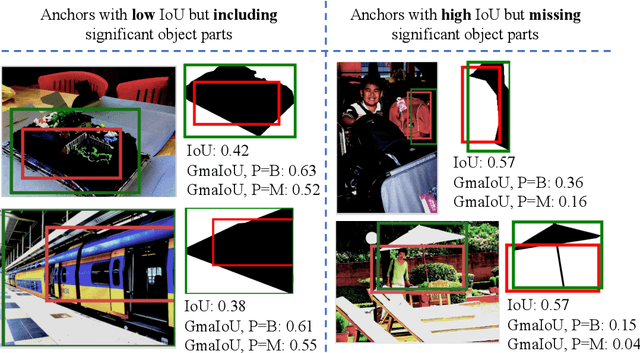


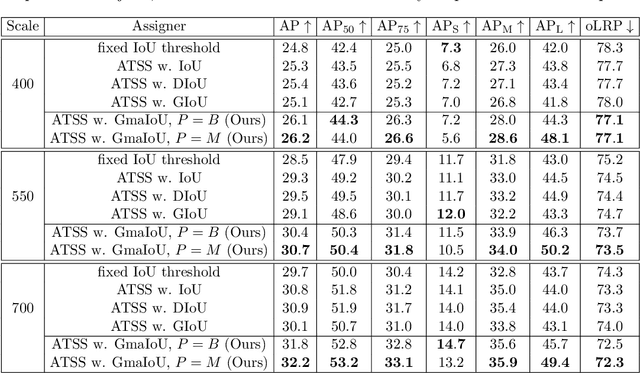
Abstract:This paper introduces Generalized Mask-aware Intersection-over-Union (GmaIoU) as a new measure for positive-negative assignment of anchor boxes during training of instance segmentation methods. Unlike conventional IoU measure or its variants, which only consider the proximity of anchor and ground-truth boxes; GmaIoU additionally takes into account the segmentation mask. This enables GmaIoU to provide more accurate supervision during training. We demonstrate the effectiveness of GmaIoU by replacing IoU with our GmaIoU in ATSS, a state-of-the-art (SOTA) assigner. Then, we train YOLACT, a real-time instance segmentation method, using our GmaIoU-based ATSS assigner. The resulting YOLACT based on the GmaIoU assigner outperforms (i) ATSS with IoU by $\sim 1.0-1.5$ mask AP, (ii) YOLACT with a fixed IoU threshold assigner by $\sim 1.5-2$ mask AP over different image sizes and (iii) decreases the inference time by $25 \%$ owing to using less anchors. Taking advantage of this efficiency, we further devise GmaYOLACT, a faster and $+7$ mask AP points more accurate detector than YOLACT. Our best model achieves $38.7$ mask AP at $26$ fps on COCO test-dev establishing a new state-of-the-art for real-time instance segmentation.
MicroExpNet: An Extremely Small and Fast Model For Expression Recognition From Frontal Face Images
Aug 13, 2018
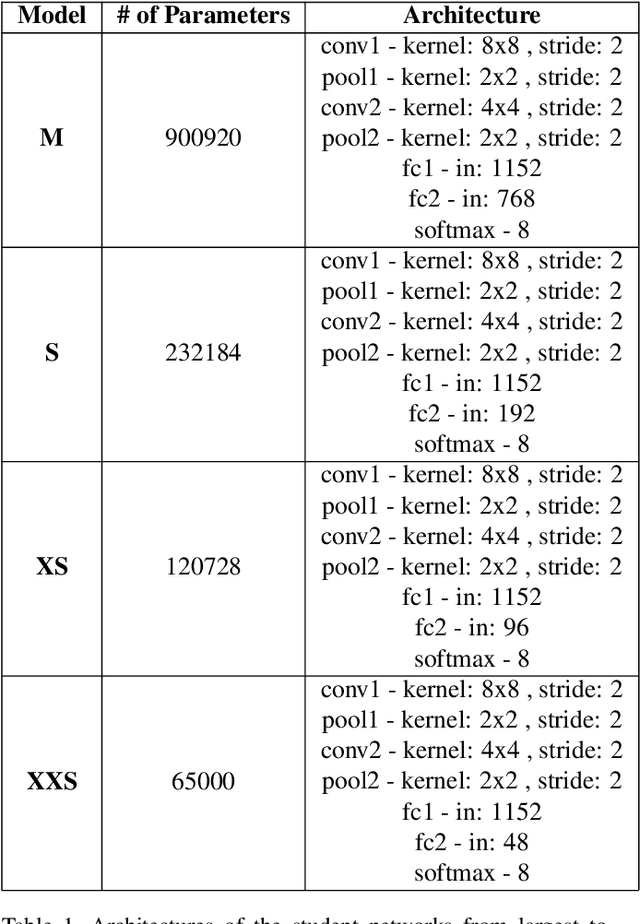
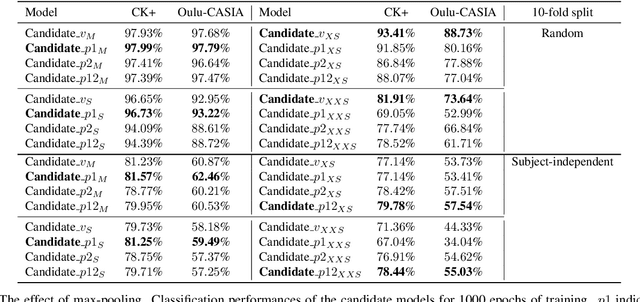
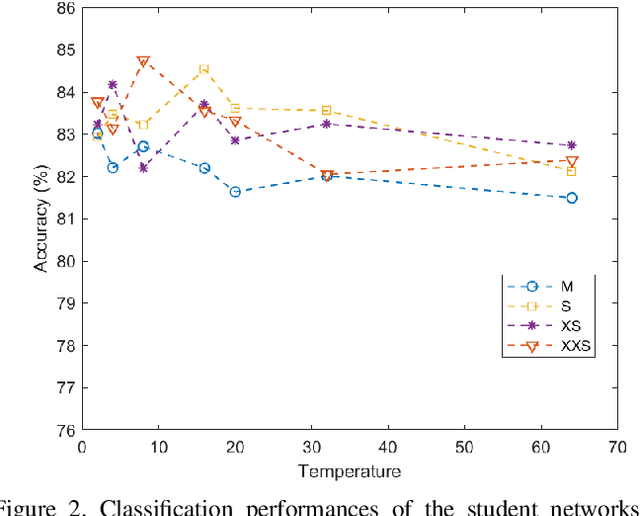
Abstract:This paper is aimed at creating extremely small and fast convolutional neural networks (CNN) for the problem of facial expression recognition (FER) from frontal face images. We show that, for this problem, translation invariance (achieved through max-pooling layers) degrades performance, especially when the network is small, and that the knowledge distillation method can be used to obtain extremely compressed CNNs. Extensive comparisons are made on two widely-used FER datasets, CK+ and Oulu-CASIA. In addition, our smallest model (MicroExpNet), obtained using knowledge distillation, is less than $1$MB in size and works at 1408 frames per second on an Intel i7 CPU. MicroExpNet performs on part with our largest model on the CK+ and Oulu-CASIA datasets but with 330x fewer parameters.
 Add to Chrome
Add to Chrome Add to Firefox
Add to Firefox Add to Edge
Add to Edge